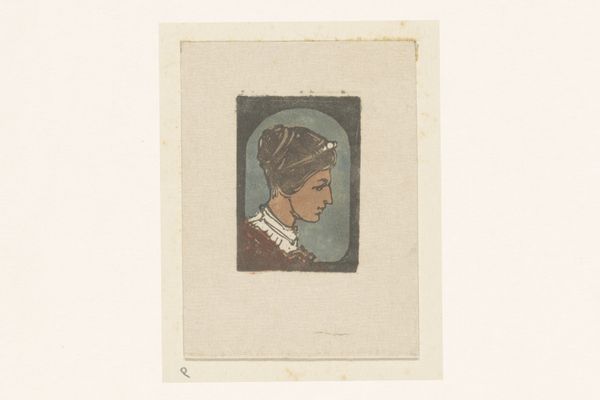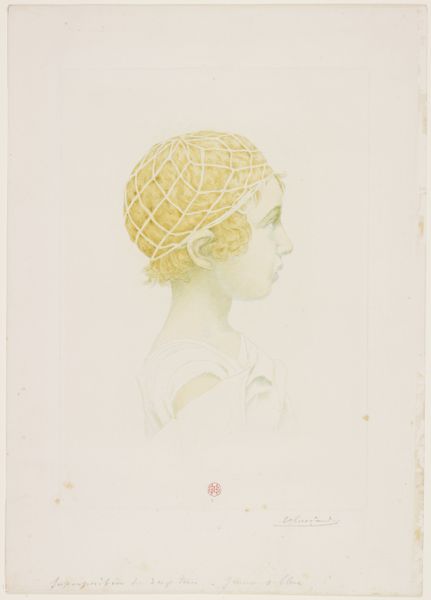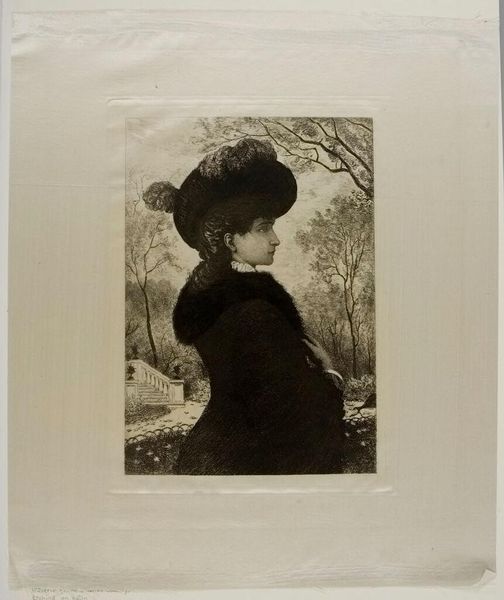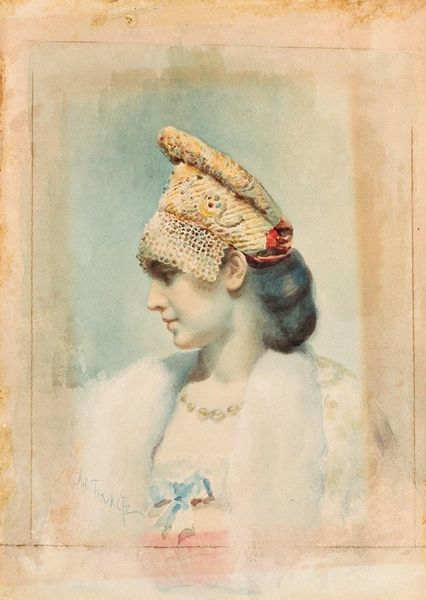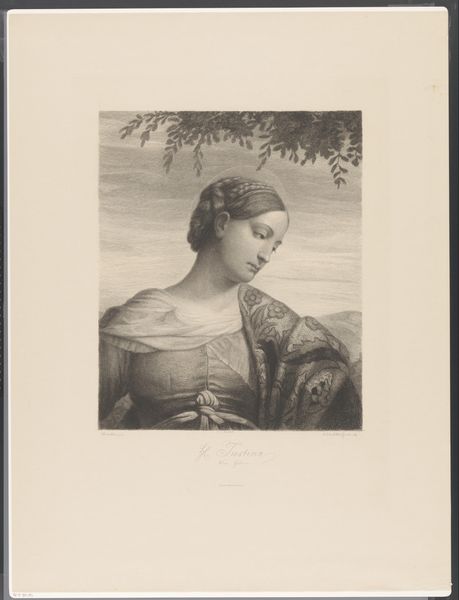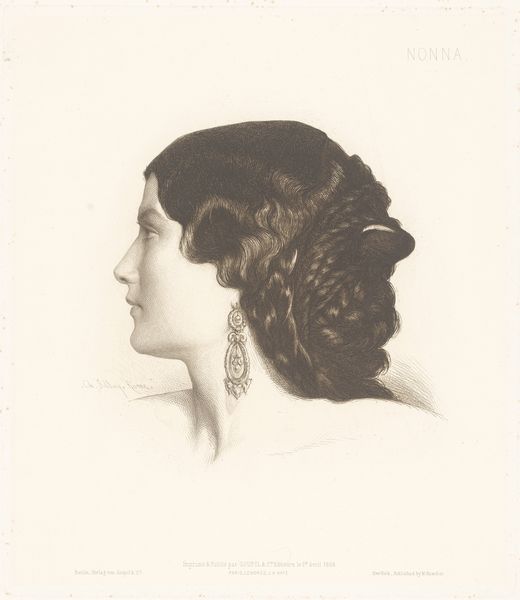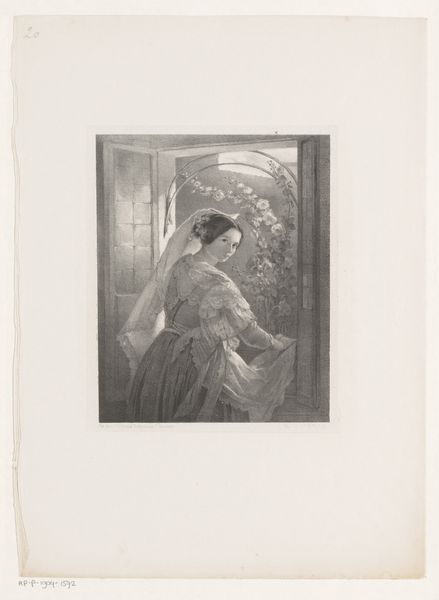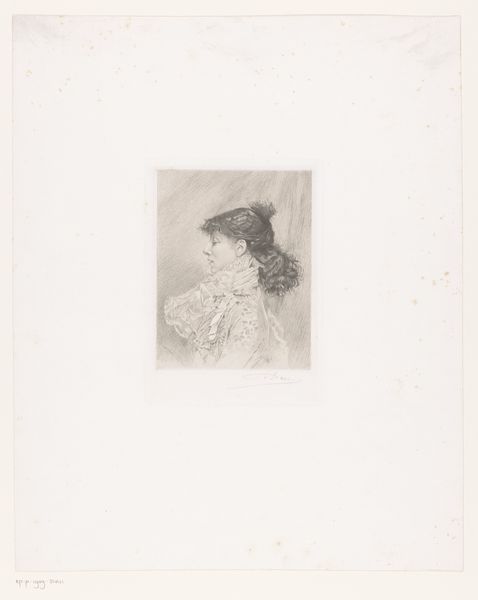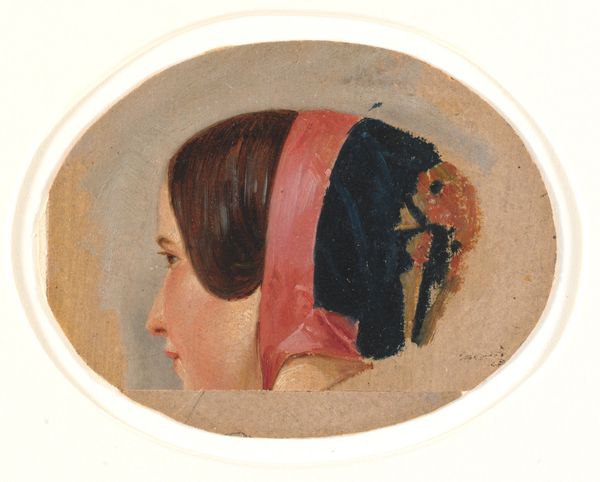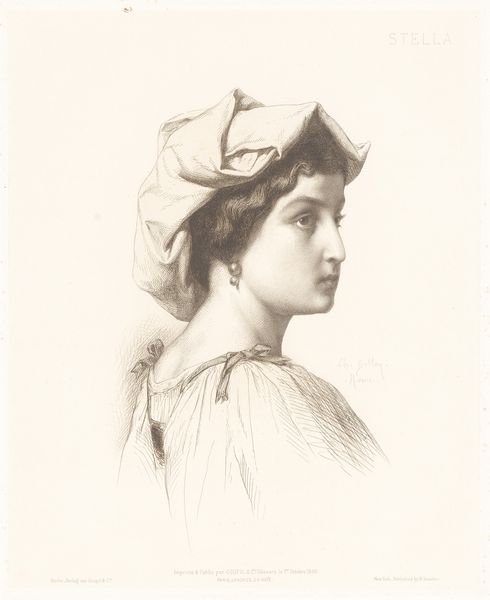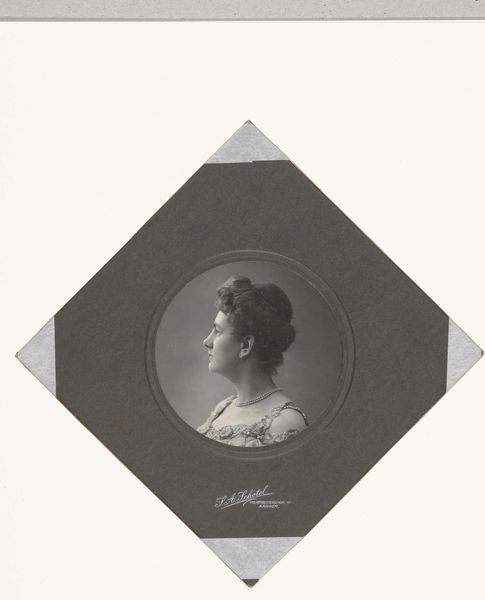
print, poster
#
portrait
#
art-nouveau
# print
#
landscape
#
caricature
#
figuration
#
historical fashion
#
symbolism
#
poster
Dimensions: height 501 mm, width 523 mm
Copyright: Rijks Museum: Open Domain
Curator: Here we have Paul Berthon’s 1901 portrait of Wilhelmina, Queen of the Netherlands, a striking example of Art Nouveau poster design now held at the Rijksmuseum. Editor: My immediate impression is one of soft melancholy; the subdued ochre tones and the Queen’s distant gaze evoke a wistful mood. Curator: Indeed. Berthon masterfully employs line and form to capture Wilhelmina’s likeness within the aesthetic framework of symbolism. The elegant contours, observe, create a rhythmic visual experience. The flat planes and stylized details are distinctly Art Nouveau. Editor: It's hard to ignore the work embedded within the ornamentation though—the detail on that lacework cap, for example. That isn't just decoration; it’s time and skill rendered visible. It's labour transformed into something we read as 'royal portrait'. Curator: Precisely! The tulips and the landscape featuring the windmills create a layered composition. The background is receding into a pictorial plane that balances Wilhelmina. Editor: These motifs read almost like branding—an industrious royal figure literally placed within the Dutch landscape of labour. What interests me is how Berthon presents these symbols of national identity in service of representing female power. What conversations might they have held to settle on those terms? Curator: One could see those windmills in relation to labor. They also serve a purely aesthetic purpose, adding depth and a touch of pastoral idealism to the portrait. The choice to set her against a landscape, rather than a more traditional courtly setting, makes the piece unique. It elevates her to be an embodiment of the country. Editor: But did she endorse the image? Did the artist’s and Queen’s differing understanding of symbolism affect reception of the print? Who actually labored to reproduce the editions and circulate the poster? What impact could those considerations have on readings about national female identity and symbolisation? Curator: Regardless, this portrait captures the aesthetic sensibilities of a moment in time, representing power and cultural identity with an incredible sophistication of line and shape. Editor: Yes, and hopefully prompts some consideration for labour and manufacture as it immortalizes the sitter and landscapes within that visual statement.
Comments
No comments
Be the first to comment and join the conversation on the ultimate creative platform.
